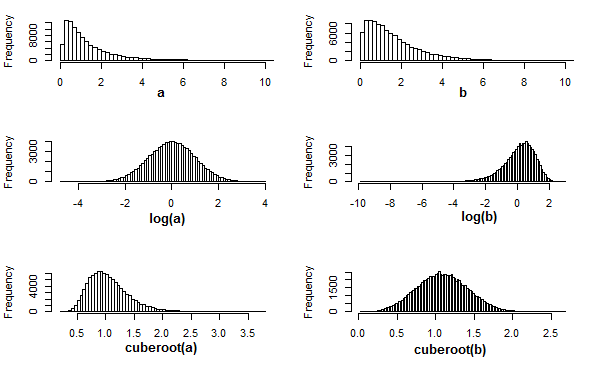I have this confusion about which transformation to use in my data. The histogram of my original data looks like this

Now I have seen at most of the places to take log transformation in case the data is positively skewed. But when I take log transformation I get something like this which is negatively skewed, not what I desire.

If I take square root transformation and cube root transformation I get like this


Now the data is pretty much close to normal. But I didn't get the intuition behind this. Why didn't it work with the log transformation when I see at so many places people mentioning about log transformation useful when data is positively skewed. Here square root and cube root worked.
I want to know at which condition we should use log transformation and at which condition to use cube root transformation. Suggestions?

